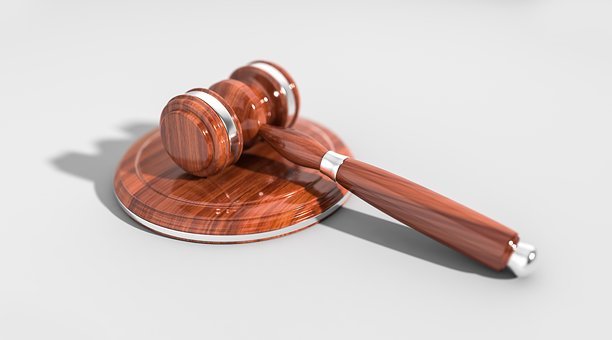United States Tax Court, No. 2917-63, July 23, 1965
Key QSBS Takeaways: In Bardahl Mfg. Corp. v. Commissioner, the United States Tax Court contended that Bardahl Corporation avoided “the imposition of individual income tax on its shareholders, by permitting its earnings and profits to accumulate instead of being divided or distributed.” In order to determined whether the Commissioner’s argument holds, the court has to calculate Bardahl’s “reasonable” working capital. The court came to the conclusion that Bardahl’s operating cycle of buying raw materials with cash, converting the materials into Bardahl Manufacturing branded products, turning inventory into sales and accounts receivable, and the leftover period where the collection of any outstanding accounts remained had an average operating cycle 4.2 months during the 4 year period in question or 35 percent of a year. Furthermore, the court considered working capital as cash equivalents such as Government notes, Treasury bills, municipal bonds, or readily convertible debentures, and occasionally in cash deposits in a savings and loan association.
Question Presented: How does the IRS calculate reasonable working capital under 1202(e)(6) under the Active Business requirement of §1202?
Rule:
1202(e)(6): “For purposes of paragraph (1)(A), any assets which—(A)are held as a part of the reasonably required working capital needs of a qualified trade or business of the corporation, or (B)are held for investment and are reasonably expected to be used within 2 years to finance research and experimentation in a qualified trade or business or increases in working capital needs of a qualified trade or business, shall be treated as used in the active conduct of a qualified trade or business. For periods after the corporation has been in existence for at least 2 years, in no event may more than 50 percent of the assets of the corporation qualify as used in the active conduct of a qualified trade or business by reason of this paragraph”
Main QSBS Issues Addressed:
The calculation of reasonable working capital under §1202(e)(6) in order to apply it to §1202(e)(1)(A).
Circumstance:
Commissioner of Internal Revenue (Respondent) determined deficiencies in Bardahl Manufacturing Corporation (Petitioner) income tax for years 1956-1959. For this purpose, the attention will be on the court’s analysis of Petitioner’s Operating Costs and the discussion of reasonable working capital.
Facts:
Bardahl Manufacturing Corporation’s operating cost cycle between the time the corporation bought raw materials, converted the materials into Bardahl Manufacturing branded products, turned inventory into sales and accounts receivable, and the leftover period where the collection of any outstanding accounts remained, averaged approx. 4.2 months during the years of 1956 through 1959.
These facts, in this case, allowed the court to analyze that through 1956 and 1959 Bardahl’s operating cycle required the corporation’s working capital to be approx. 35 percent of the “reasonably anticipated” total annual operating costs and cost of goods sold at the end of each of the years between 1956 though 1959.
| Year Ended (Dec. 31) | Operating Costs (less depreciation and Federal Income Taxes) | Cost of Goods Sold | Total |
| 1955 | $242,474.07 | $540,515.73 | $782,989.80 |
| 1956 | $268,907.67 | $532,692.15 | $801,599.82 |
| 1957 | $298,303.22 | $539,877.53 | $838,180.75 |
| 1958 | $468,937.07 | $902,560.33 | $1,371,497.40 |
| 1959 | $400,961.12 | $993,602.15 | $1,394,563.27 |
Analysis:
The court considered working capital as cash equivalents such as Government notes, Treasury bills, municipal bonds, or readily convertible debentures, and occasionally in cash deposits in a savings and loan association.
Continuing, the court would first determine the amount of working capital Bardahl had to “reasonably anticipate” to be sufficient in order to finance the corporation’s expected costs of normal operations.
The Commissioner argued Bardahl needed a working capital to cover anticipated operating costs in the amount of $322,965; $348,180; $396,500; and $435,443 for the years of 1956 through 1959.
Bardahl argued the corporation needed a working capital reserve to finance its expected costs of operation in the amount of $448,132; $499,182; $632,496; and $726,984 for the years of 1956 through 1959.
The court and parties involved both agreed the appropriate basis to calculate Bardahl’s need for operating capital is by calculating the amount of cash the corporation reasonably expected to sufficiently cover operating costs for one cycle (citing to Smoot Sand & Gravel Corporation v. Commissioner, 274 F.2d 495; United States v. McNally Pittsburgh Manufacturing Corp., 342 F.2d 198.)
As stated before, the court based a operating cycle off of the time period required to:
- Bought raw materials with cash,
- Converted the materials into Bardahl Manufacturing branded products,
- Turned inventory into sales and accounts receivable, and
- The leftover period where the collection of any outstanding accounts remained
The court stated that the operating cycle averaged at 4.2 months during the 4 year period in question or 35 percent of a year. The reasonable working capital for 4.2 months or 35% of the year was $293,400; $480,000; $488,000; and $488,100. The court has considered all expenses that were displayed in the profits and losses statements; which included directand indirect expenses, and the cost of goods sold. However, the court did omit “any consideration of [Bardahl’s] anticipated Federal income taxes for the following year since this is not the kind of operating expense for which cash is needed in advance.” See Bardahl Mfg. Corp. v. Comm’r, 24 T.C.M. 1031, 1045 (1965).Calculating federal income tax for the following year only happens if there arises sufficient earnings from any profitable future operations requiring their imposition.
Court Ruling:
The court stated,
“In our view, at the beginning of each year petitioner would need liquid assets to meet operating expenses for a maximum of only 4.2 months on the assumption that no operating revenue would be received until the expiration of its operating cycle. Additional expenditures for operating costs beyond the first 4.2 months of each year would not be incurred without the production of operating revenue.”
Bardahl Mfg. Corp. v. Comm’r, 24 T.C.M. 1031, 1045 (1965).
Procedure:
United States Tax Court, No. 2917-63, July 23, 1965
Citation:
Bardahl Mfg. Corp. v. Comm’r, 24 T.C.M. 1031 (1965).
View the memo here.
This article does not constitute legal or tax advice. Please consult with your legal or tax advisor with respect to your particular circumstance.

